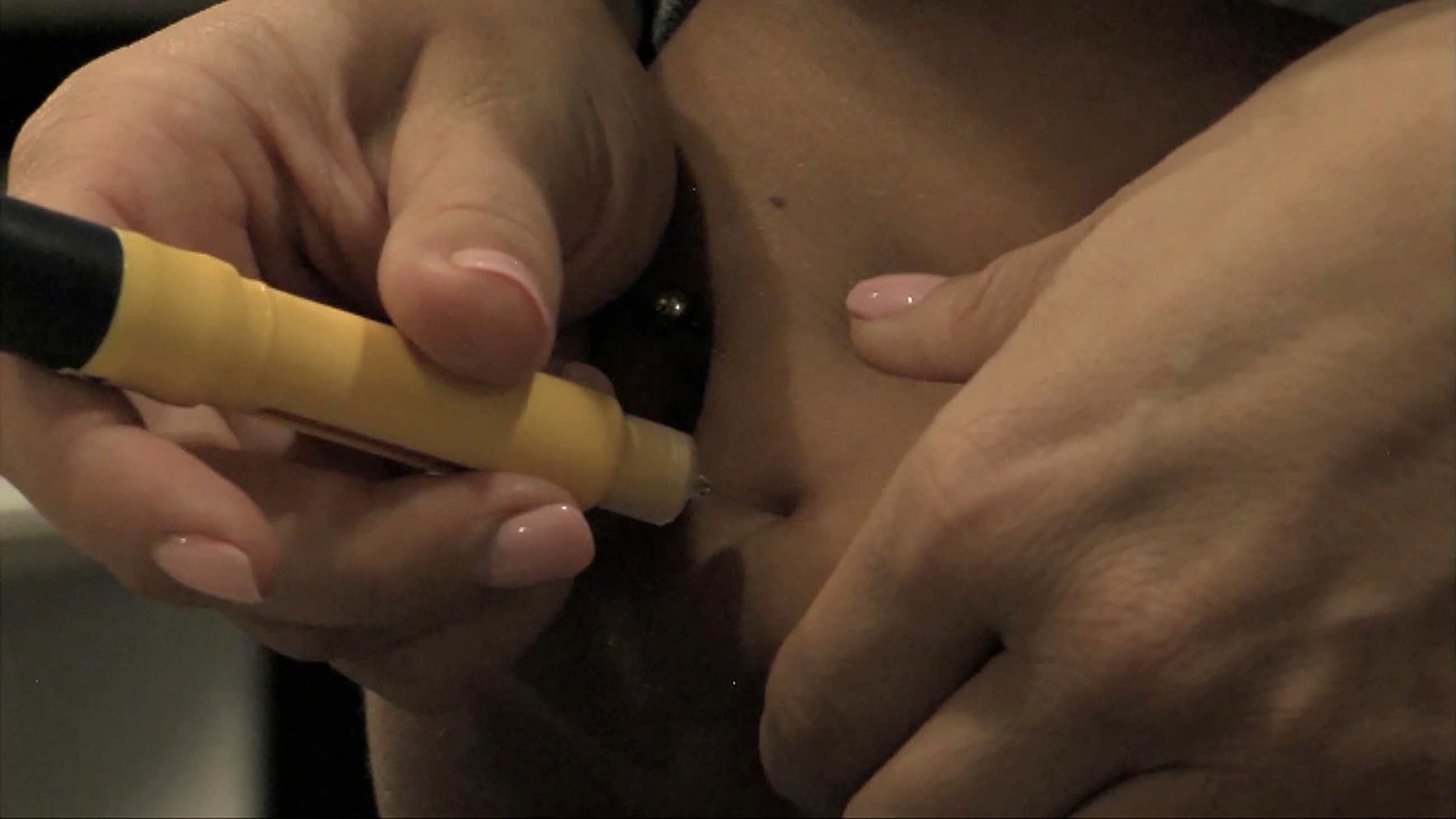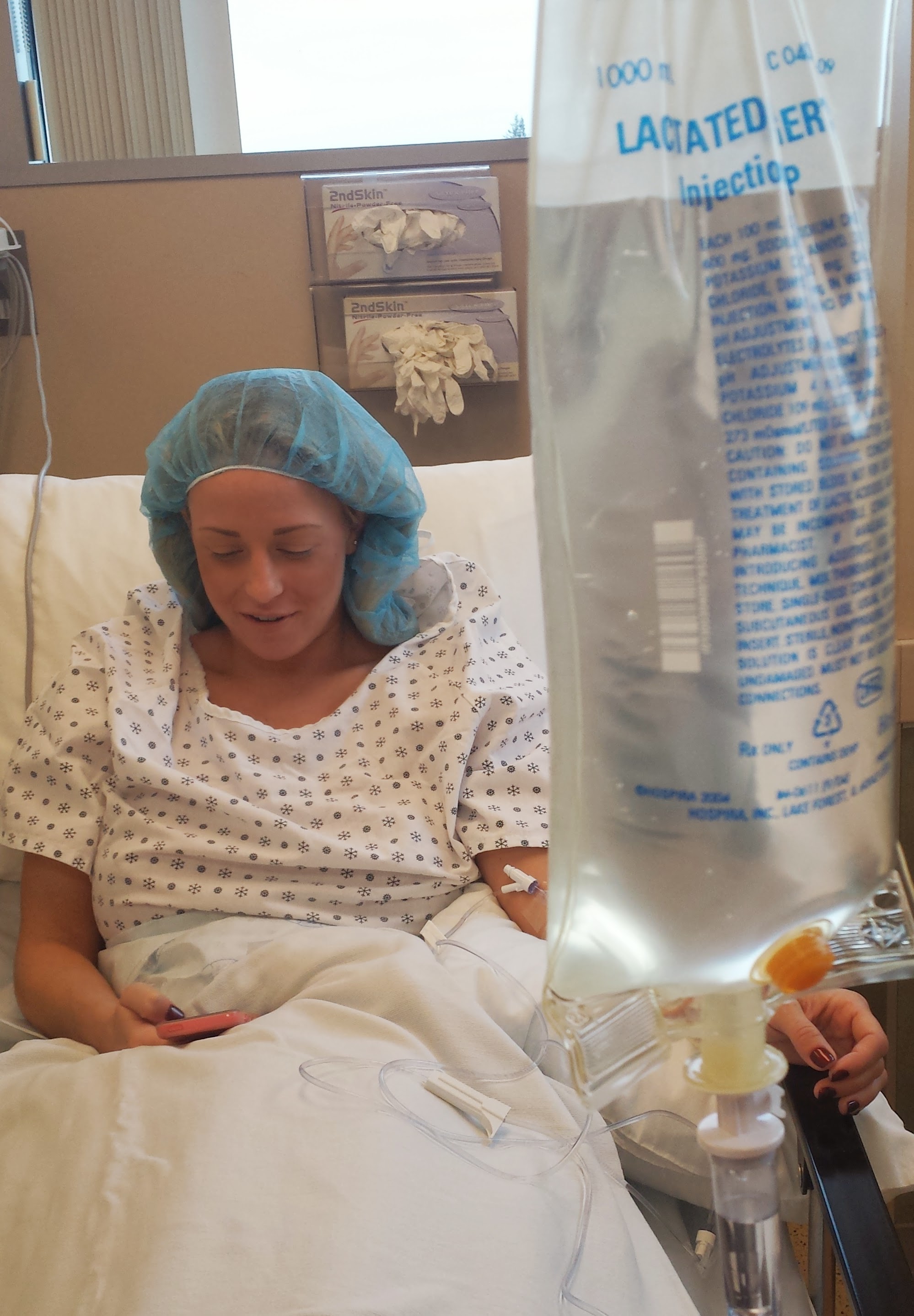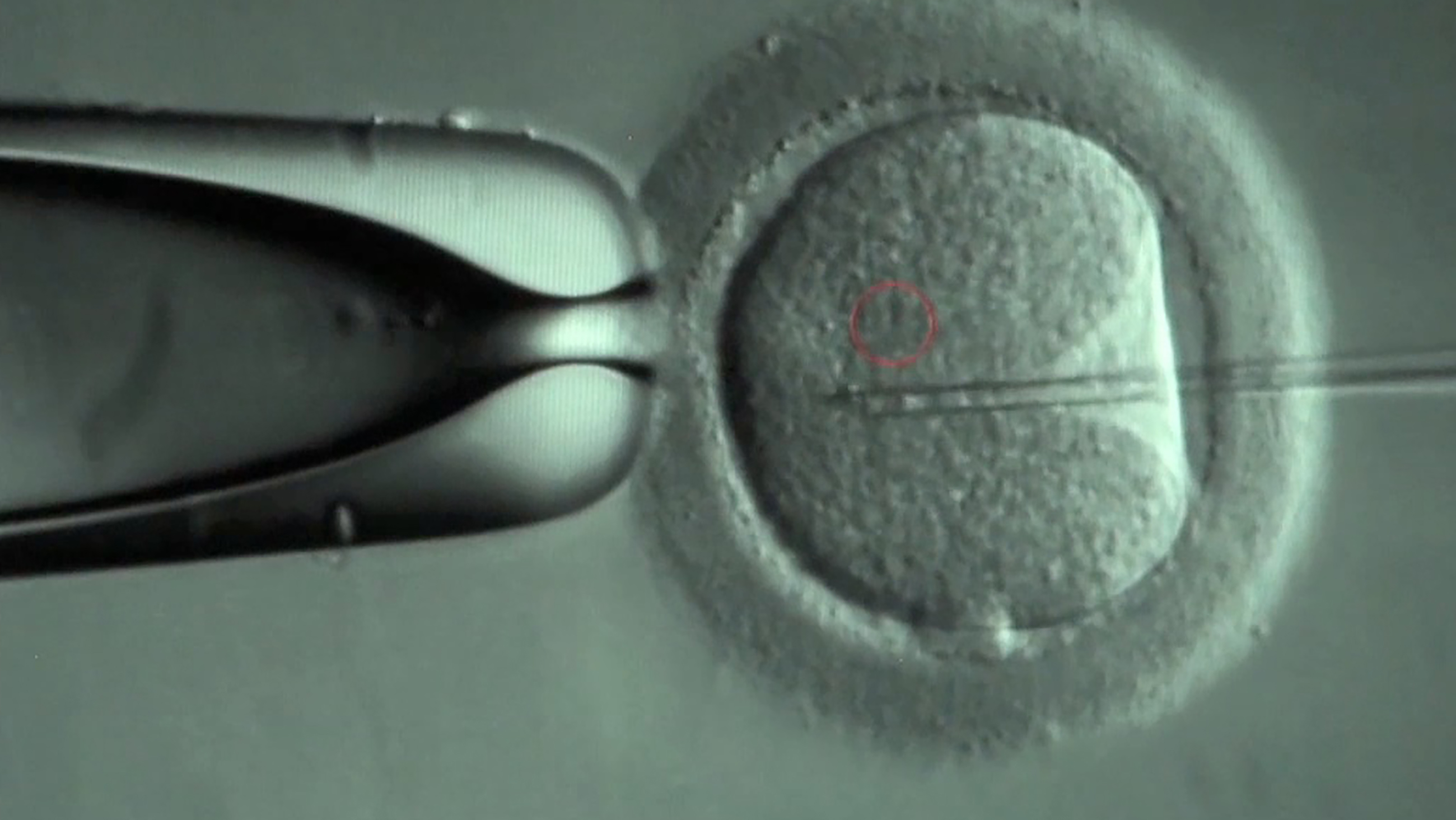The Politics of Women’s Eggs
A curious battle is being waged over women’s bodies in the state of California. It’s not, as one might expect, the ongoing fight over women’s rights to abortion, which I fully support. Rather, the dispute involves a woman’s right to donate her eggs for use in scientific research — and to be compensated for it. And while the clash is usually characterized as one that pits a conservative definition of “life” against a liberal embrace of a “woman’s rights to choose,” the core issues here are much more complex.
The fight began in 2004, when California voters passed Proposition 71. This initiative made stem cell research in the state a constitutional right, but state legislators — following ethical guidelines developed by the National Academy of Sciences with regard to eggs donated for stem cell research — incorporated restrictions on donor compensation. Chapter 2. Section 12355 of the California Health and Safety Code currently states:
No payment in excess of the amount of reimbursement of direct expense incurred as a result of the procedure shall be made to any subject to encourage her to produce human oocytes for the purposes of medical research.
This meant that women providing eggs to reproductive clinics — typically for fertilization and implantation in another woman having difficulty conceiving on her own — could be compensated for their efforts, which are substantial. But women supplying eggs for scientific research could not.
Payments of anywhere from $6,500 to $15,000 are not uncommon in the fertility trade — in part because healthy, attractive, educated young women with high-quality eggs suitable for use in reproducive treatments are comparatively hard to find, and because many women would not go through the grueling hormone injections and surgical procedures without payment. The highest compensation I’ve heard is $250,000 for a donor at an “elite” agency serving wealthy clients.
But scientists conducting basic biomedical research using donated eggs — research that, for example, can establish new stem cell lines that have the potential to unlock treatments for a variety of common diseases, or new options for oocyte preservation for cancer patients — are barred by the 2004 law from paying anything beyond the direct costs incurred by women in the donation process. The restriction is intended to prevent women from providing eggs for research purely out of financial need. A high price, the thinking goes, would unfairly induce many women into donating — an implicit abrogation of informed consent.
Critics, including many scientists, have complained that the law limits the availability of eggs desperately needed for other research. It was with this in mind that state Democratic Assembly Member Susan Bonilla — with backing from the American Society for Reproductive Medicine (ASRM) — introduced a bill three years ago, known as AB-926. The bill sought to change current California law, requiring “women providing human oocytes for research to be compensated for their time, discomfort, and inconvenience.”
In my role as Associate Executive Director at the Berkeley-based Center for Genetics and Society, a politically progressive nonprofit, I was put in charge of leading the organization’s battle against AB-926. I worked together with other women’s health advocates and advocacy organizations, including Our Bodies Ourselves, Alliance for Humane Biotechnology, We Are Egg Donors, Pro-Choice Alliance for Responsible Research, Women’s Cancer Resource Center, National Women’s Health Network and Black Women’s Health Imperative.
These are all pro-choice organizations, but we found ourselves in an uncomfortable alliance with anti-abortion and religious organizations on this particular issue — albeit for very different reasons. I provided expert testimony at the Senate Health Committee hearing to oppose the bill.
For all of our efforts, the bill passed — with large Democratic support — through both the Assembly and the Senate. But in August 2013, Governor Edmund Gerald “Jerry” Brown Jr. — also a Democrat — vetoed AB-926 with the following message:
Not everything in life is for sale, nor should it be. This bill would legalize the payment of money in exchange for a woman submitting to invasive procedures to stimulate, extract, and harvest her eggs for scientific research. The questions raised here are not simple; they touch matters that are both personal and philosophical. In medical procedures of this kind, genuinely informed consent is difficult because the long term risks are not adequately known. Putting thousands of dollars on the table only compounds the problem.
There was an outcry among the bills’ supporters, who called the Governor’s message “paternalistic” and “regressive” — in large part, they argued, because it underestimated the ability of young women to make their own medical decisions.
But turning the issue into one of “pay equity” — that is, suggesting that because men can be paid to provide sperm for research, it is discriminatory to deny women the opportunity to be compensated to provide oocytes for the same purpose — is misleading.
Sperm donation and egg donation are vastly different procedures — and this, from my vantage, is the heart of the matter.
As it stands, donating eggs for any purpose – reproductive or otherwise — is both demanding and, for some women, inherently risky. In a normal cycle, for example, a healthy woman releases one mature egg, or oocyte, each month. When donating eggs, however, a woman must spend several weeks self-injecting hormones to stimulate her body to produce more — generally a lot more. In my interviews with over 60 egg donors for both my research and my documentary film, women routinely reported that they produce over 30 mature eggs in a single cycle. The highest I’ve heard is 80.
Forty-eight hours before the mature oocytes are to be retrieved, the donor then injects a hormone-rich “trigger shot” of either human chorionic gonadotropin, leuprorelin, or some combination. Later, with the donor under general anesthesia, a physician inserts an ultrasound-guided needle up through the vaginal wall to one ovary, sucks out the mature oocytes, and then repeats the process on the other ovary.

When a donor produces large numbers of eggs she’s at increased risk for complications like Ovarian Hyperstimulation Syndrome — a potentially life-threatening condition. OHSS occurs when the empty follicle sacs fill up with fluid. The body usually absorbs the extra fluid, but it can become dangerous if the rate of absorption falls behind, and the fluid keeps increasing. The leuprorelin trigger shots reduce OHSS risk, but some doctors prefer other medications. Leuprorelin — initially prescribed for men with prostate cancer — is used off-label and has an array of potential side effects in women, including menstrual irregularities.
Further complicating matters is that informed consent is inconsistent. Recruiters and physicians often reassure prospective donors that the risks are “rare,” or occur less than “1 percent of the time” — with no evidence to support that claim. In over thirty years of egg donation, no research has been done on the impact of egg provision on women’s health over time.
Many women, of course, have no complications from egg donation. But what about those who do?
A one-time egg donor I interviewed — I’ll call her Sari to preserve confidentiality — suffered severe OHSS with fluid build-up in both lungs. She couldn’t get ahold of her clinic so she went to the emergency room. The ER staff, at first baffled by what could have caused her extreme fluid build-up, was at a loss as to what to do. Finally, one ER physician decided to drain the fluid, but could only drain one lung at a time. Sari’s other lung collapsed, and months after her egg retrieval, her menstrual cycle has still not returned to normal.
Risk for ovarian torsion (the ovary twisting in the body) increases with OHSS as well. Another donor, “Mona,” told me that she routinely produces between 40 and 50 eggs per cycle. She had moderate to severe OHSS on her third, fourth, and fifth donations, but recovered within a couple of weeks. After her sixth donation, however, she had extreme vomiting and severe cramping. Mona ended up in the hospital with ovarian torsion. Now, her own fertility may be compromised.
Wendy Kramer, the founder of the Donor Sibling Registry, and Dr. Jennifer Schneider, an Arizona physician, found in a retrospective survey study of 155 women, that self-reported OHSS occurs 30 percent of the time. In my own data, which includes both retrospective and pre- and post-donation interviews, so far 12 percent of women suffered OHSS severe enough to require up to two weeks bed rest or hospitalization to drain excess fluid.
These complications are completely avoidable.
Dr. Salli Tazuke, a reproductive endocrinologist, believes that 10 to no more than 20 eggs is an ideal target number for a donor cycle. When I asked her about egg donors who produce 40, 50 or more eggs in a single cycle, Tazuke called it terrifying.
“That result is a direct result of what a physician decides to do.”
Like Dr. Tazuke, some doctors care deeply about their donors, and use conservative drug protocols to avoid bringing too many eggs to maturity. But standards of care vary, and some physicians use more aggressive dosages and protocols to retrieve as many eggs as possible, compromising donor health in the process.
Of course, I am not unsympathetic to the need for eggs for research. Fresh eggs are used in somatic cell nuclear transfer (SCNT) research, and are used to create embryos for human embryonic stem cell (HESC) research. Potential benefits of this work include the promise of therapeutic cloning, the development and testing of new drugs or cell-based therapies for a variety of diseases and conditions, and fertility-related research that can improve reproductive options and infertility treatment.
This promising work is being crippled in California, researchers say, by the lack of egg supply arising from current compensation restrictions. Currently, only New York permits state funds to be used to compensate egg donors for human embryonic stem cell research. Aside from Massachusetts, which also bans compensation, most states have no explicit policy.
Perhaps not surprisingly, given this, another Democratic member of the California Assembly, Autumn Burke, introduced AB-2531 just a few months ago. In essence, it is a reincarnation of AB-926, and like its predecessor, the bill promotes “Pay Equity for Reproductive Research.” Words like “women’s empowerment,” “equity,” “freedom to choose” are woven throughout the political discourse.

Among the egg donors I’ve talked to, most support the idea of a national registry that can help to track the health of egg donors over time. (Visual by Ricardo Martin)
As an Assistant Adjunct Professor at University of California, San Francisco, where I focus full-time on egg donation research, I attended the Assembly Health Committee hearing on the measure in April. A good deal of testimony was provided both for and against broader compensation, but in the end, the ayes had it. AB-2531 will be headed to the Senate Health Committee Hearing in June, and then on to the Governor’s office by August.
After the hearing, I approached Dr. Richard Paulson, a professor of reproductive medicine at the University of Southern California and president-elect of the American Society for Reproductive Medicine (ASRM). Dr. Paulson had provided testimony in support of the bill. I asked him about the possibility of creating a national egg-donor registry to track the health of women who donate eggs over time.
“The problem with a registry has to do with preserving egg-donor confidentiality,” Paulson told me. “Women are not going to want to be identified.”
I quickly pointed out to him that among the egg donors I’ve talked to, most support the idea of a registry, and they are calling for research that tracks donor health long-term. Many in the industry support the idea as well, including reproductive endocrinologists and agency recruiters.
There are models for this. In Spain, where egg donation is highly regulated and donor anonymity is required, a donor health registry is already being developed. And of course, here in the United States, we already have a registry for living kidney donors — the United Network for Organ Sharing — which requires a two-year health follow-up post-donation.
Couldn’t a similar system be used to follow egg donors?
As a researcher myself, I can sympathize with the seduction of discovery, and the lure of developing new technologies and treatments that stem cell research may offer society at large. The millions of dollars of funding available to support such research would also be enticing.
But the history demonstrates that the burden of human experimentation has rested on the shoulders of the socially and economically disadvantaged. The focus of AB-2531 is to obtain eggs for research, but it ignores the need for research into the impacts of the myriad drugs and procedures used to coax and extract those eggs in the first place. For these reasons, among others, feminist scholars like Diane Beeson and Abby Lippman have called for a moratorium on egg harvesting for research.
It does not seem paternalistic to them, nor to me, to raise the flag of caution. It is important to question the appropriateness of inducing young women to become gamete providers if there’s even a chance that it might compromise their own health, wellbeing, and possibly future fertility.
Perhaps there are other possible sources of oocytes and embryos that would not require new women to undergo these procedures? There are millions of frozen eggs and embryos sitting in cryopreservation in laboratories across the country. Campaigns to enhance donation of unused eggs or embryos might be a better place to start. Currently California law prohibits using eggs or embryos created from a donor who was compensated. I would not be opposed to changing that portion of California law. Such a solution would mitigate risk to women while enabling research to move forward.
Short of that, if scientists want women’s eggs so they can embark on important discoveries for the benefit of humanity — and this applies to egg donors for fertility treatment as well — then let’s look out for the women who provide them by accomplishing the following.
¶ Establish a donor registry and track donor health over time.
¶ Reduce medication dosages and avoid drug protocols that increase risk for OHSS.
¶ Implement restrictions on the quantity of mature oocytes that can be produced in a single cycle, and cancel cycles when there are more than 20.
¶ Ensure egg donors are covered by medical insurance beyond just a few days or weeks post-donation.
¶ Limit the number of cycles a woman can undergo in a lifetime — perhaps three is a safer number than 6.
¶ Accurately reveal all possible complications and don’t dismiss them as “rare” when obtaining informed consent.
¶ Develop a system in which doctors who routinely severely hyperstimulate their donors are held accountable.
Without more information, young women who provide eggs are simply being kept in the dark.
Dr. Diane Tober, a medical anthropologist and documentary filmmaker, has conducted extensive research on topics related to bioethics, reproductive technologies, and commodification of the body. She is currently an assistant professor at the University of California, San Francisco’s Institute for Health and Aging.










